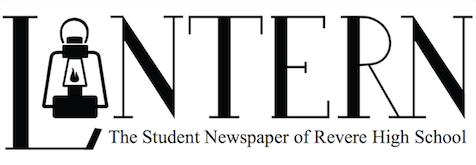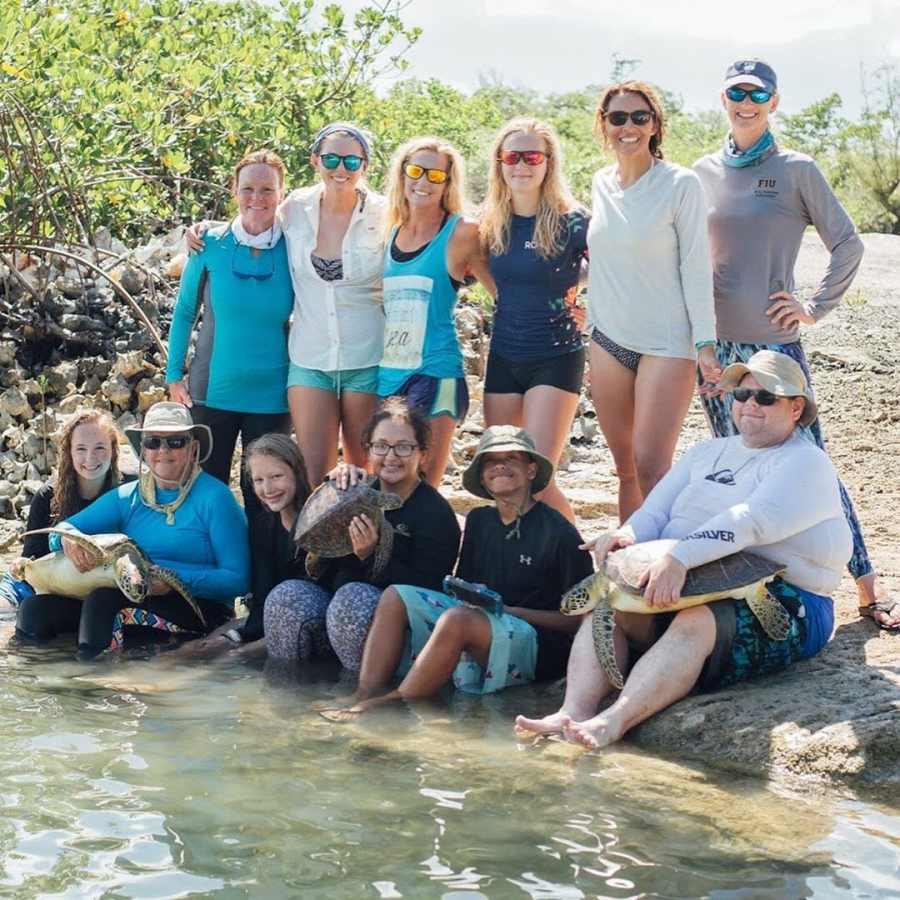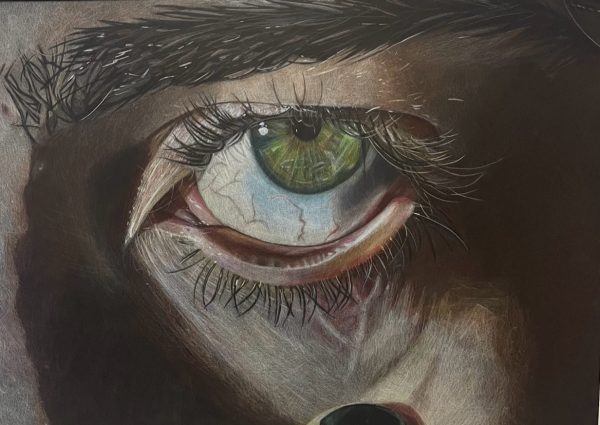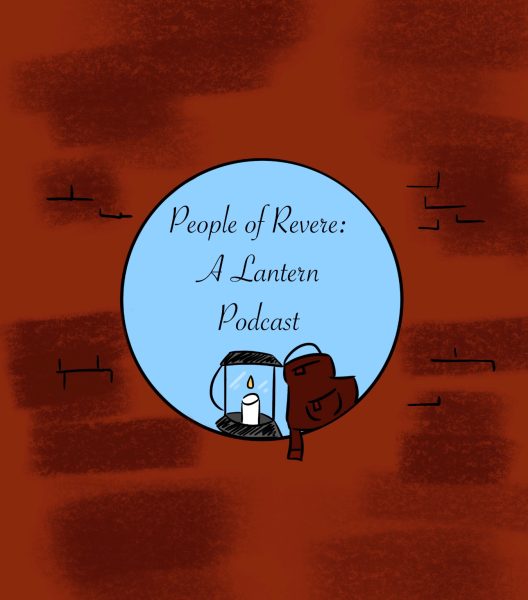Revere students selected to study sea turtles in Bahamas
Keri Tomechko (bottom left) and Lydia Brownlee (second from left) were selected to study sea turtles in the Bahamas over the summer. Photo courtesy of Lydia Brownlee. Used with permission.
It is early morning off the coast of Abaco island Bahamas, the boat rocks gently as the turquoise water laps against the hull. The spotter on the boat suddenly yells “Turtle!” The boat accelerates towards the shelled reptile as it darted away rapidly. After ten minutes of the chase a diver jumps in the water to try and catch the marine turtle, it easily out maneuvers three different swimmers. But by the fourth swimmer the turtle is tired, the diver reaches out and catches it. The turtle is then brought on board where there are several other sea turtles already captured. The engine on the boat revs up and the shallow water churns into a white foam as the researchers head back to Abaco.
A morning like this was normal operations over the summer for senior Keri Tomechko and freshman Lydia Brownlee. Both were selected to be part of JASON Learning’s Argonaut program, which included an all expenses paid research trip to the Bahamas to study sea turtles. The Argonaut program for JASON Learning provides a variety of science-oriented trips for high school students. Last year there were six trips ranging from studying owls in Arizona to exploring the Amazon Rainforest in Peru. Tomechko and Brownlee’s team consisted of five students and four teachers from different schools across the nation. To be considered for the program, students had to write several essays and make a YouTube video highlighting their science backgrounds and interests. Freshman Lydia Brownlee described the application process in detail.
“To be considered for an expedition you have to go through the application process, which includes writing two essays, one about [your] science preferences and the other about a personal life experience, making a video about why you should be chosen for the program, a reference letter and the normal application questions. Then your application is viewed by the school board and if you are lucky enough, chosen for the program,” Brownlee said.
Senior Keri Tomechko described why she wanted to be apart of the program.
“I thought it would be a fantastic opportunity both educationally and experientially. I have never had a chance to participate in legitimate research before and thought the trip would be a great [opportunity] to do so,” Tomechko said.
Each day the team would wake up around eight in the morning where one of them would make breakfast for the team. The team would then split up and half would go to work on the Cassiopeia project, where they would study an upside down jellyfish known as the Cassiopeia jellyfish. The other half of the team would go to set up the boats they would use to catch the sea turtles. Once the Cassiopeia group finished, the team would meet up and go out to catch turtles. Ten-to-twelve turtles would be caught and then brought in for processing at the research station. Brownlee described the process for studying the turtles.
“Once we had caught the turtles, we took them back to the land and look them over. We would measure the length of the head, shell, carapus, underside of the shell, flippers and tail. Once we had the measurements we would look for tumors on the turtle. Majority of the turtles we caught had some sort of Fibropapillomatosis, Fp for short. Fp is a disease that causes the growth of both internal and external tumors on turtles,” Brownlee said.
Fp is a disease that scientists have been studying for years but still do not know its origin, effects, or its causes. The researchers found that nine out of every ten sea turtles they caught had the disease. Tomechko explained how they plan to research the disease through the turtles.
“Before we released each turtle, we tagged them with a metal clip on [one of] their fins. The goal of the research is that, after the turtles are recaptured in future years, the progression and effects of the disease can be studied. We entered all of our data in a large spreadsheet. The data from Abaco is part of a world-wide research project on FP in sea turtles,” Tomechko said.
Hurricanes have battered the Bahamas in past years and most recently by hurricane Dorian. Brownlee described what she learned from the trip.
“The turtle[s] really do need saving, and not because of the plastic straws. I learned that the pictures you see of the Bahamas is only part of them. Most of the islands are covered in garbage and other litter,” Brownlee said.
Hurricane Dorian left around 70,000 residents homeless and destroyed 45% of the homes located on Abaco island. The Bahamas Disaster Relief Fund, set up by the Bahamian government, is accepting donations for relief, along with the American Red Cross.











